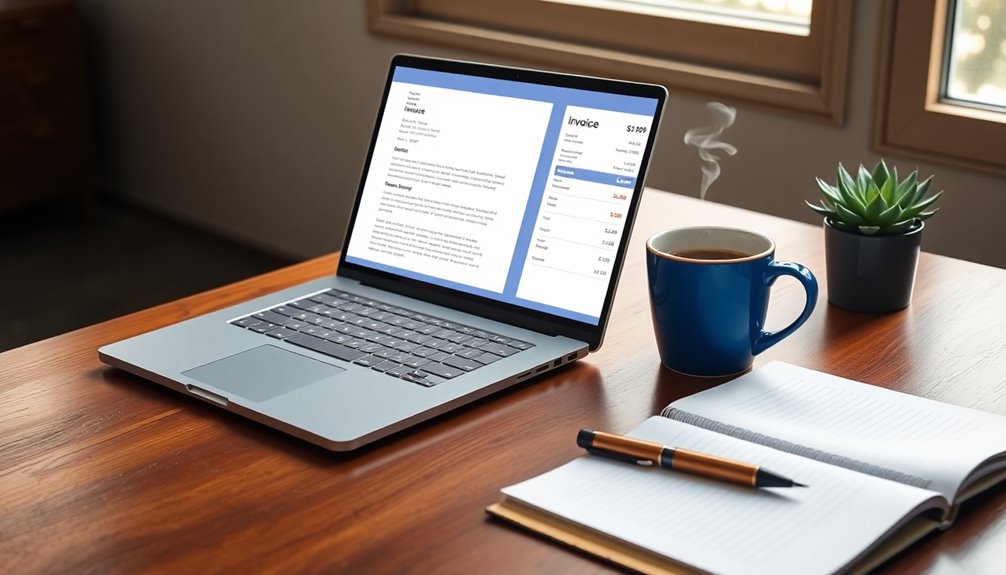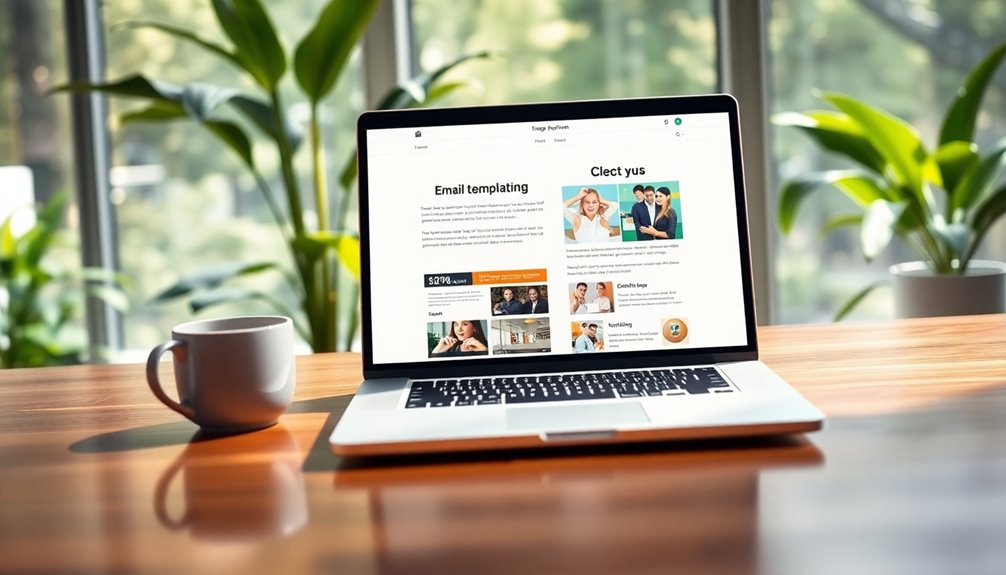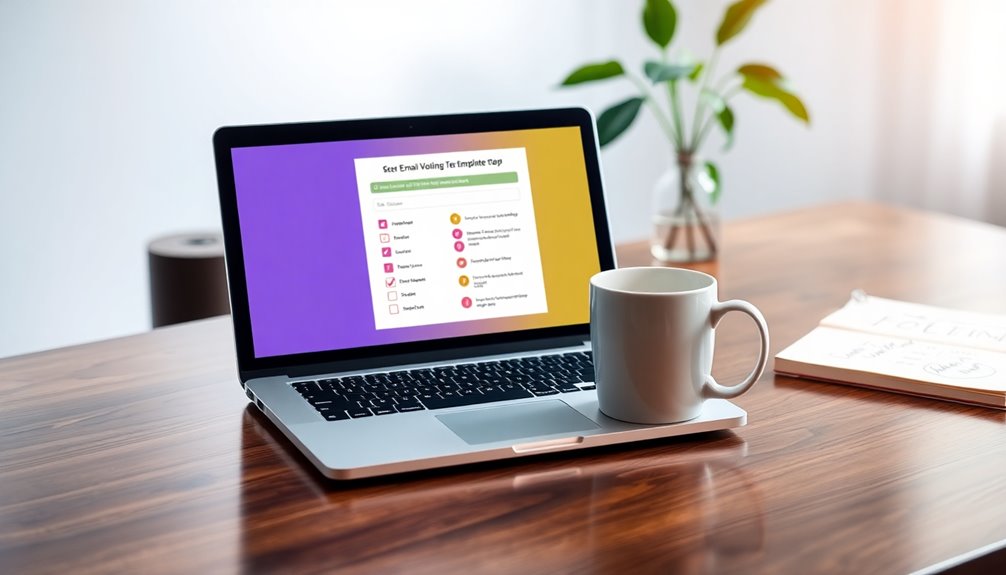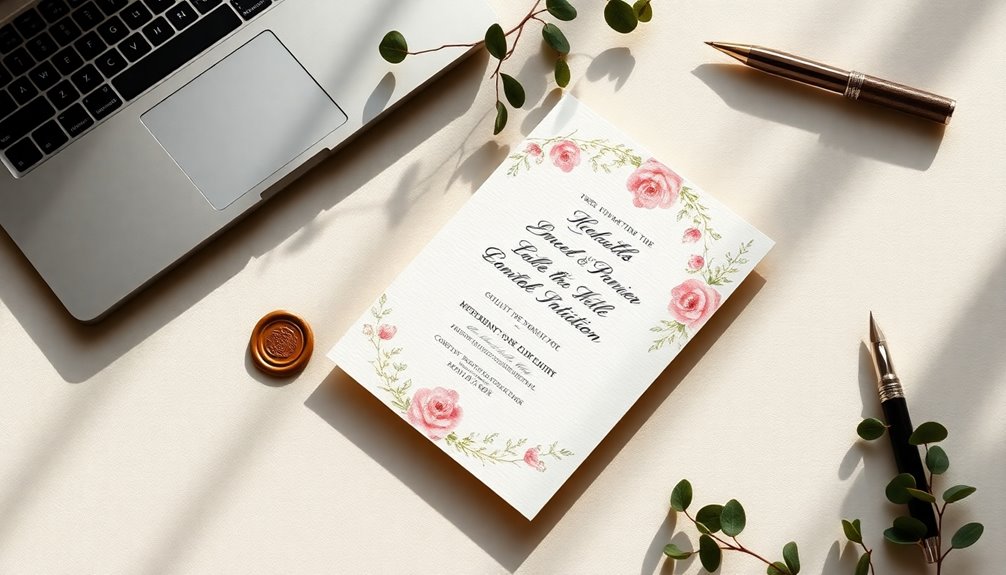To create an email template that clients love, start with a clear subject line like "Quotation for [Service/Product]." Use a professional greeting to set a respectful tone. Clearly outline your pricing structure and payment terms to build trust and avoid confusion. Incorporate bullet points for easy readability and personalize the email to make your client feel valued. Don't forget to follow up! This demonstrates your commitment and can spark further negotiations. With these tips, you'll enhance client relationships and improve your response rate. If you want to elevate your quoting process even further, there's more to explore.
Key Takeaways
- Use a clear and specific subject line to set expectations, such as "Quotation for [Service/Product] – [Your Company Name]."
- Personalize the email by addressing the client by name and tailoring content to their specific needs.
- Include a detailed pricing structure and transparent payment terms to build trust and avoid misunderstandings.
- Utilize bullet points and headings to enhance readability and make important information easy to digest.
- Ensure to follow up promptly after sending the quotation to demonstrate attentiveness and encourage further discussion.
Introduction
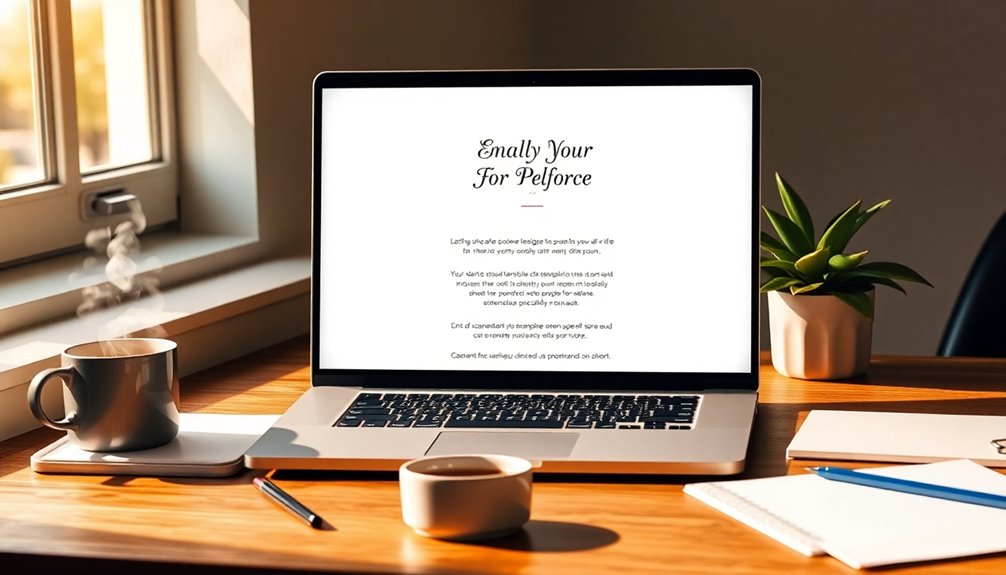
When you need to send a quotation via email, crafting a clear and effective message is crucial. Start with a clear subject line, like "Quotation for [Service/Product]," so your recipient knows what to expect. A professional and courteous greeting sets a respectful tone and shows you value their request for quotation.
In your email, provide details that matter. Include a detailed pricing structure that breaks down items, quantities, total prices, and any discounts. This transparency helps clients make informed decisions and builds trust.
Don't forget to outline terms and conditions, covering payment options and delivery details. This clarity helps avoid misunderstandings down the line.
As you wrap up your email, include a strong closing statement that expresses your eagerness to hear back. A simple "I'm looking forward to your response" can make a big difference.
Be sure to provide comprehensive contact information so they can reach out easily if they've questions or need further clarification. Following these tips will help you create a quotation email that's not only effective but also professional and engaging for your clients.
Builds Client Trust Quickly
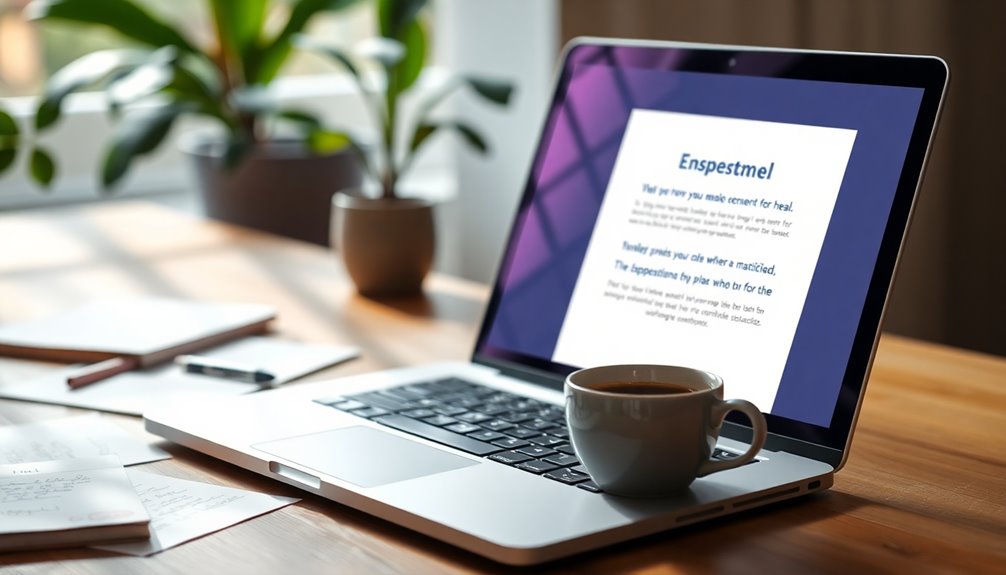
A well-crafted quotation email can build client trust quickly, often making the difference between securing a deal and losing a potential customer.
When you use a quotation email template that highlights professionalism, you create a strong first impression. Including a transparent pricing breakdown is essential; clients appreciate seeing a clear and itemized list of costs, which reassures them about their purchasing decisions. Utilizing email segmentation helps ensure your message resonates with the specific needs of your client.
Personalizing quotation emails by addressing specific client needs shows that you understand their requirements and are committed to meeting them. This personal touch can foster a deeper connection, making clients feel valued.
Moreover, timely follow-ups after sending your price quotation email demonstrate your attentiveness and dedication to client satisfaction. This proactive approach reinforces trust and encourages open communication.
Don't forget to provide comprehensive contact information in your email. Offering additional information and support options assures clients they can reach out whenever needed, further building client trust. Additionally, understanding the importance of advance directives can enhance discussions around financial planning, positioning you as a knowledgeable partner in their decision-making process.
When you combine these elements, you not only enhance your professional image but also create a trustworthy atmosphere, encouraging potential clients to engage.
Clear Subject Line Importance
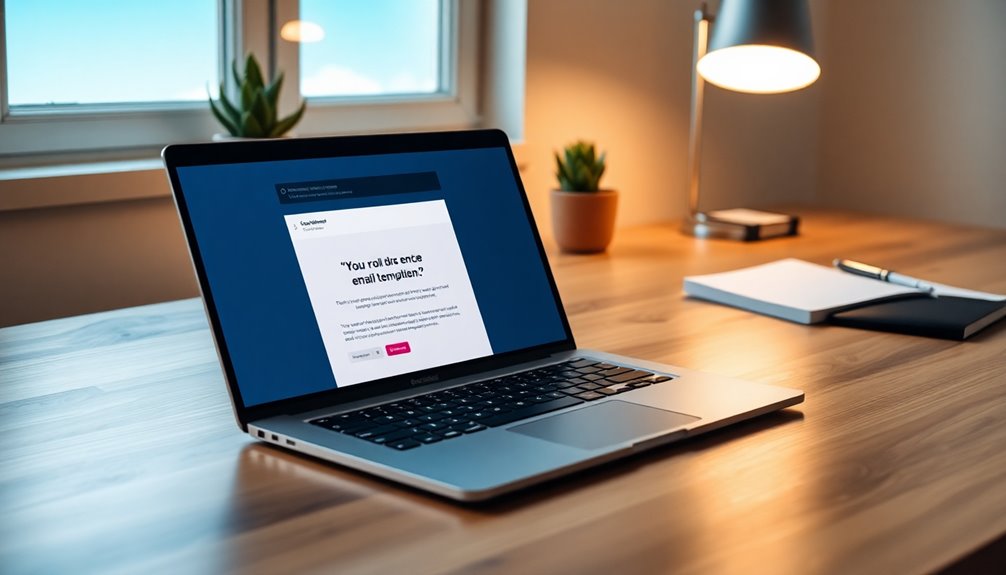
Many successful businesses understand that a clear subject line can significantly impact the effectiveness of a quotation email. When you craft a quotation email subject, make sure it immediately informs the recipient of the email's purpose. A concise subject line, like "Quote for [Service/Product] – [Your Company Name]," not only provides context but also helps organize the recipient's inbox.
This attention to detail enhances professionalism, which is crucial for building trust with potential clients. Research shows that specific subject lines lead to higher open rates, with personalized ones boosting engagement by up to 26%. When you include elements like urgency, such as "Quotation Valid Until [Date]," you encourage timely responses and prompt decision-making. This aspect of email communication can be the difference between a quick response and a delayed one. The ability to effectively communicate through email mirrors the strategies used in the New York Times Connections Puzzle, where clarity and pattern recognition play vital roles in success. Additionally, maintaining a budget can help you manage expenses effectively and ensure that your pricing remains competitive.
Effective quotation emails start with a clear subject line, setting the tone for the entire correspondence. By prioritizing clarity and relevance, you position yourself as a professional who values your client's time and needs.
Ultimately, a well-crafted subject line is your first step toward successful engagement.
Crafting a Compelling Quotation Email
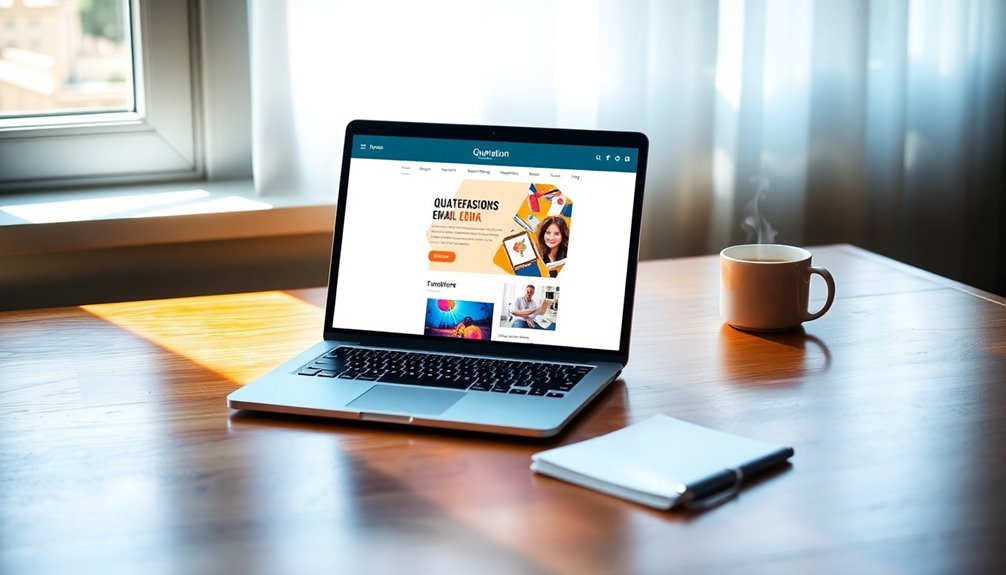
Craft a compelling quotation email by focusing on clarity and professionalism. Start with a clear subject line like "Quotation for [Service/Product] Request." This sets the tone for your email and ensures the recipient knows its purpose right away.
In your quotation email format, include a detailed breakdown of pricing, highlighting unit costs and any applicable discounts. This transparency showcases the value for money you're offering.
Outline payment terms, delivery timelines, and any conditions tied to the quote. This helps prevent misunderstandings and sets clear expectations.
Personalize the email by addressing the client by name and referencing their specific details, such as previous discussions or unique needs. This shows you're attentive and engaged with their requirements.
Pro Tips for Maximizing Impact
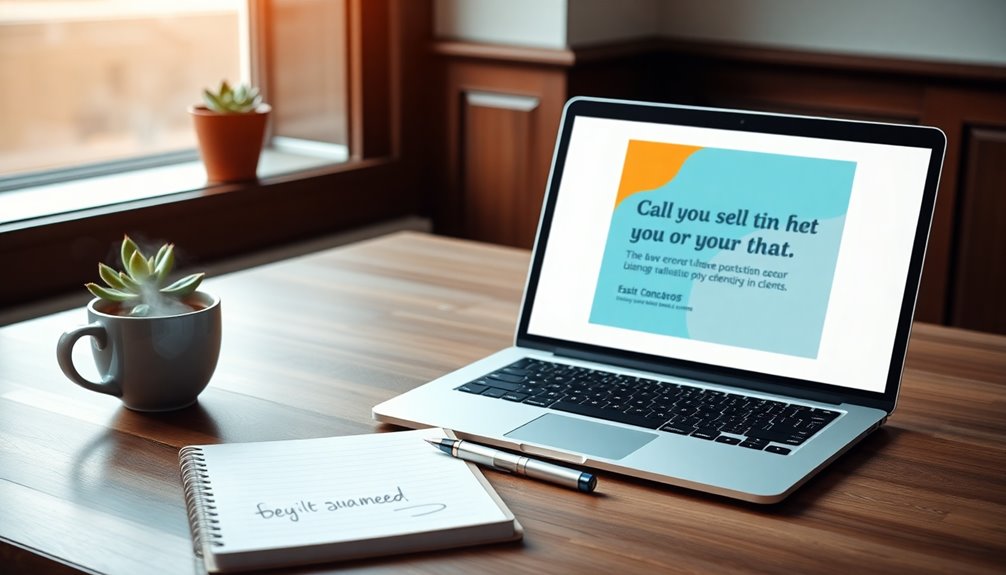
To maximize the impact of your quotation email, focus on personalization and clarity. Begin by addressing the client by name and referencing their specific needs. This personalized email approach makes your message feel tailored rather than generic, enhancing engagement.
Use a clear subject line, like "Quotation for [Service/Product Name]," to immediately inform the recipient about the email's purpose.
When you provide a detailed quotation, include a comprehensive breakdown of costs, payment terms, and delivery details. Utilize bullet points or tables to clearly explain the total price and any discounts or special offers. Additionally, ensure that your pricing strategy reflects the need for diverse investments to attract different client budgets. It's essential to understand the importance of strong communication skills in building trust with your clients.
Highlight unique selling points, such as warranties or customer support, to differentiate your offer from competitors.
Don't forget to follow up within a week if you haven't received a response. This shows your commitment to customer service and can prompt clients to move forward with their decision-making process.
By incorporating these strategies into your quotation email templates, you'll increase the likelihood of securing the business. Always keep in mind what clients need and how your offer meets those needs.
You'll be able to create a quotation that clients love and look forward to receiving!
Common Mistakes to Avoid
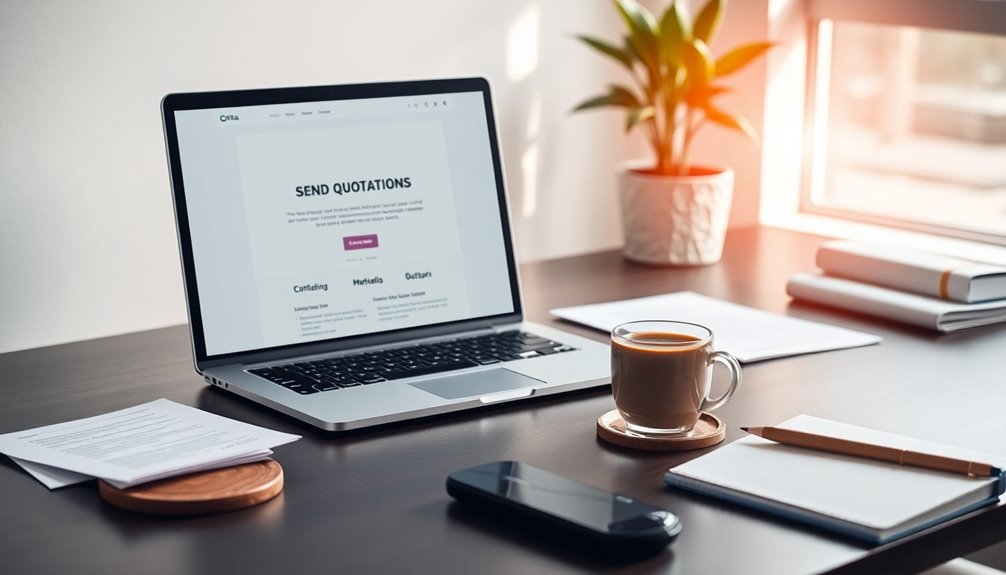
When sending a quotation email, it's crucial to steer clear of common pitfalls that can diminish your chances of success. One major mistake is failing to personalize the quotation email. A generic message won't engage your client or address their specific needs, making it less likely they'll respond positively. Additionally, make sure to provide a quote that includes all essential details like payment terms, delivery schedules, and itemized pricing. Omitting these can create confusion and hinder decision-making. Another common error is neglecting to proofread for spelling and grammatical errors. These mistakes can undermine your professionalism, causing clients to question your credibility. Also, avoid using a vague subject line; it may lead to your email being overlooked or marked as spam, reducing your chances of a prompt response. Furthermore, consider implementing structured data in your communications to enhance clarity and improve client understanding of your offerings. Incorporating user-friendly navigation can also help streamline communication and improve the overall experience for your clients.
Quotation Request Email Template
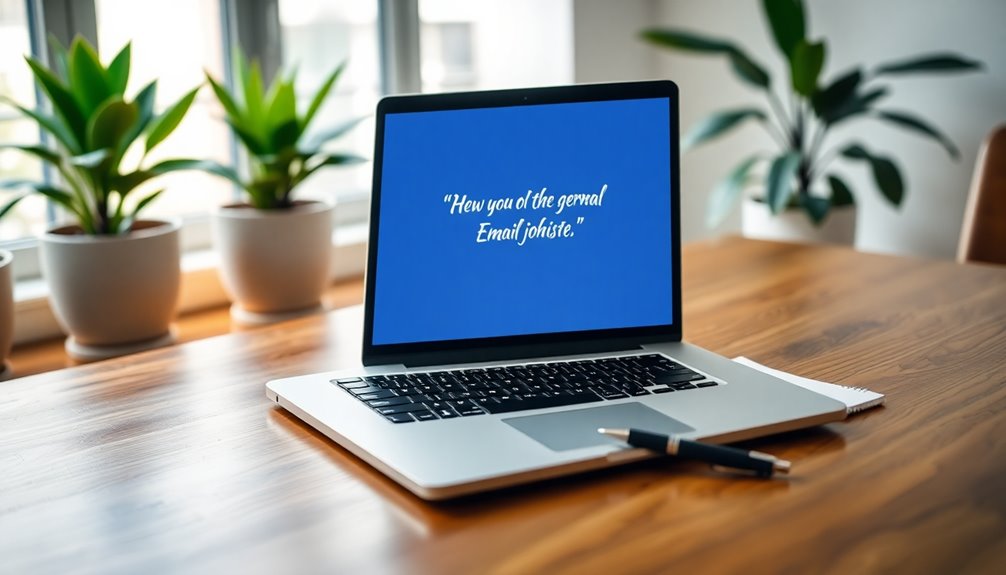
Creating an effective quotation request email template is essential for obtaining accurate and timely responses from vendors.
Start with a polite greeting to make a positive impression. Briefly introduce your company to establish credibility and provide context for your request.
Clearly outline the specific products or services you need, including quantities and any unique requirements that could affect pricing.
Make sure to specify a deadline for receiving the quotation; this encourages timely responses and helps you plan effectively.
If applicable, attach supporting documents or include detailed project descriptions to enable vendors to provide more accurate and tailored quotes.
This extra information can significantly improve the quality of the responses you receive. Additionally, ensuring that your payment methods are secure is vital for maintaining business integrity in your transactions.
Final Thoughts

Crafting a well-structured quotation email can make a significant difference in your business interactions. When you clearly outline the value of your products or services, you not only engage prospective clients but also boost your chances of conversion.
Personalizing your email by addressing specific client needs fosters a stronger connection, making them more likely to accept your offer.
Utilizing a structured format with headings, bullet points, and pricing tables enhances readability. This approach helps clients quickly grasp your offer, making the decision-making process smoother for them.
Remember to follow up within a week to show your commitment to client satisfaction. This keeps the dialogue open and paves the way for further negotiation or clarification.
Lastly, please make sure to regularly update your templates. This ensures you provide us with accurate pricing and terms, streamlining the quoting process.
Consistency in communication builds trust and reinforces your professionalism.
So, if you need assistance or have questions regarding your quotation email, don't hesitate to contact us.
Implement these strategies, and watch how they transform your business interactions into lasting relationships.
Frequently Asked Questions
How to Write an Email for Sending a Quotation to a Client?
To write an email for sending a quotation, start with a clear subject line. Greet the client warmly, provide a detailed breakdown of services, outline payment terms, and conclude with an inviting closing statement.
How to Write a Follow-Up Email to Client After a Quotation?
To write a follow-up email after a quotation, start with a polite greeting, reference the original quote, ask if they have questions, highlight your offer's value, and include a clear call to action.
How Do You Deliver a Quote to a Client?
To deliver a quote to a client, craft a clear email outlining the specifics, including prices and terms. Personalize your message, maintain professionalism, and follow up if you don't hear back soon.
How Do You Prepare Quotes for Clients That Get Accepted?
To prepare quotes that get accepted, focus on personalization, clarity in pricing, and highlighting unique benefits. Show you understand their needs, and don't forget to follow up to keep the conversation going.

